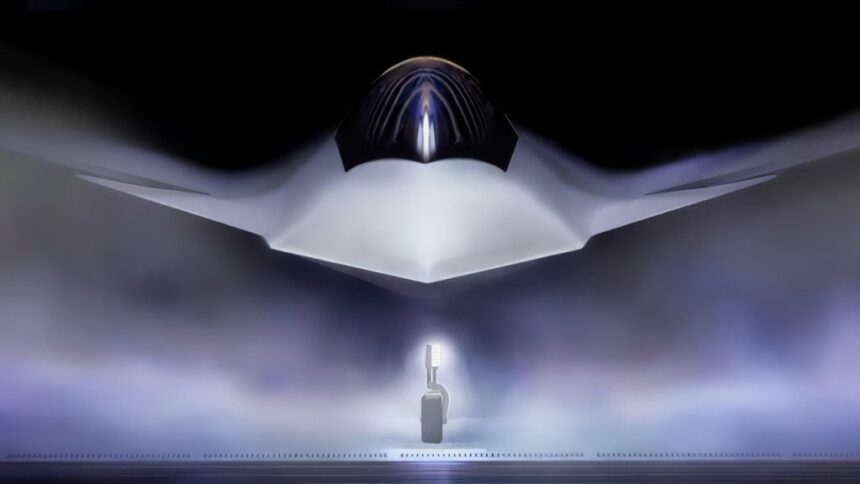In the frigid skies above the Arctic Circle, where sovereignty concerns grow as rapidly as climate change alters traditional boundaries, Canada faces a critical defense capability gap. The aging CF-18 Hornets, workhorses of the Royal Canadian Air Force for decades, can no longer effectively counter advanced threats emerging across the geopolitical landscape. As neighboring nations bolster their Arctic capabilities, Canada stands at a crossroads that demands bold action rather than incremental responses.
The United States’ Next Generation Air Dominance (NGAD) program, expected to produce the F-47 stealth fighter, represents a technological quantum leap in aerial warfare—one that Canada cannot afford to ignore. While Ottawa continues its measured procurement of F-35 Lightning II fighters, defense analysts increasingly point to the necessity of looking beyond this transitional solution toward truly next-generation capabilities.
“The Arctic is becoming a contested space in ways we haven’t seen since the Cold War,” explains Dr. Margaret Williams, defense strategist at the Canadian Institute for Strategic Studies. “Russia has dramatically expanded its northern military infrastructure, while China now self-identifies as a ‘near-Arctic state’ with growing ambitions. Canada’s ability to monitor and defend its sovereignty requires platforms that can operate effectively in this challenging environment.”
The F-47, though still classified in many aspects, promises capabilities that would transform Canada’s defense posture. Its expected extended range would address one of the most persistent challenges in Canadian air defense—the vast territories that must be patrolled with limited resources. Sources familiar with the program suggest the aircraft will incorporate breakthrough propulsion technology, advanced stealth features, and sensor fusion capabilities that far exceed current fifth-generation fighters.
Canada’s aerospace industry stands to gain substantially from early investment in the NGAD program. The CO24 Business sector analysis reveals that Canadian companies already supply critical components for advanced military aircraft, but deeper integration into next-generation programs could elevate domestic capabilities to new heights. Unlike traditional procurement models, partnership in developmental phases creates opportunities for technology transfer and indigenous capacity building that strengthens Canada’s industrial base.
The economic calculus extends beyond direct aerospace benefits. Advanced military technology development has historically driven innovation across multiple sectors, from materials science to artificial intelligence. Canadian universities and research institutions would likely see increased funding and collaborative opportunities with American counterparts, cementing Canada’s position in the high-technology ecosystem.
“The spillover effects cannot be overstated,” notes Dr. Jean Tremblay, economics professor at the University of Toronto. “The computational systems, material sciences, and autonomous systems research that underpin next-generation military aircraft have profound applications in civilian sectors. Early participation gives Canada a seat at the table where future technologies are being defined.”
Critics argue that Canada’s defense budget cannot accommodate such an ambitious acquisition. With approximately $26 billion in annual defense spending, committing to both the F-35 and future F-47 would indeed require fiscal reallocation. However, proponents counter that strategic defense investments must be weighed against the potential costs of capability gaps in an increasingly contested Arctic region.
The political dimensions are equally complex. Defense procurement in Canada has historically been fraught with partisan division, but emerging threats in the High North have begun to foster rare consensus. Recent polling indicates growing public support for modernizing Canadian Armed Forces, particularly in capabilities related to territorial sovereignty.
“What we’re seeing is a recognition across the political spectrum that Canada’s strategic environment has fundamentally changed,” says former Defense Minister Peter MacKay. “The question isn’t whether we need advanced air defense capabilities, but rather how quickly we can acquire them and at what scale.”
International relations considerations also favor Canadian participation in the NGAD program. As the United States seeks trusted partners for sensitive technology development, early Canadian commitment would strengthen bilateral defense relations and potentially secure preferential access to capabilities that might otherwise be restricted. The strategic value of such collaboration extends beyond the aircraft themselves to encompass broader intelligence sharing and integrated defense planning.
As world powers accelerate their military modernization programs, the window for Canada to secure its position in next-generation defense technology is narrowing. The decisions made in Ottawa over the next 24 months will determine whether Canada enters the mid-21st century as a technologically capable Arctic power or increasingly relies on allies for its northern defense.
As Canadians contemplate their nation’s future security requirements, perhaps the most pressing question is not whether the country can afford to invest in next-generation fighters like the F-47, but whether it can afford not to. In a world where technological advantage increasingly defines military capability, will Canada choose to lead or follow in defending its sovereign interests?






















